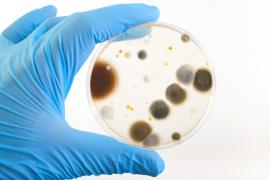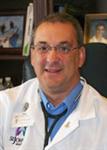The occurrence of infectious diseases
The development of the pathological process occurs in several stages:
- the moment of infection - there is penetration of pathogenic microbes in an organism;
- the incubation (latent) period - lasts from infection to manifestation first symptoms;
- prodromal period - accompanied by a slight fever, headache, general malaise;
- the growth of the disease - a appearance of symptoms typical for a specific disease;
- the height of the disease - the time strongly pronounced manifestations specific symptoms of the disease;
- period of fading of the disease - is accompanied by the disappearance of clinical signs of disease;
- period of convalescence - the duration depends on the overall condition of the body, the environment in which is patient, the severity of this illness.
For many infectious diseases in humans (smallpox, typhoid, influenza, scarlet fever, diphtheria) characteristically the development of complications during illness. After infectious disease person at some time, or forever acquires immunity.
Classification of infectious diseases
Infectious diseases of man, depending on the specific transmission mechanism and place of localization process are divided into the following groups:
- Intestinal - salmonellosis, cholera, dysentery, paratyphoid A and B, foodborne diseases, ehsherihioza, typhoid fever;
- Respiratory tract infections - chicken pox, SARS, measles, influenza, mycoplasmal respiratory infection;
- Blood infections - malaria, plague, typhus fever and relapsing, HIV infection;
- Infectious diseases of external integuments - tetanus, anthrax;
- Infection with multiple transmission routes - infectious mononucleosis, enterovirus infections.
By the nature of causing agents infectious disease are divided:
- virus - measles, influenza, parainfluenza, HIV infection, viral hepatitis, meningitis, cytomegalovirus infection;
- prion - fatal familial insomnia, kuru, Creutzfeldt-Jakob disease;
- protozoal - cryptosporidiosis, amebiasis, babesiosis, toxoplasmosis, blastocystosis, malaria;
- bacterial - cholera, plague, dysentery, staphylococcal and streptococcal infections, salmonella, meningitis;
- mycosis (fungal infections) - epidermofitiya, aspergillosis, candidiasis, mucormycosis, cryptococcosis, chromomycosis.
What are the methods of diagnosis and treatment of infectious diseases is used?
To a infectionist you may be referred after some unforeseen situations, such as after an animal bite. Then the doctor interrogates you about your symptoms and sensations, as well as appoints a prophylactic vaccination. Then, the expert notes whether there were any signs of the disease after a day or week.
When a typical reception, a infektsionist is interested in the main reasons that prompted the patient to visit, if necessary, appoint additional procedures or delivery of the analysis.
After determining of disease doctor prescribes treatment. Treatment of infectious diseases, it is not only the adoption of medicaments, antibiotics, as well as an appropriate diet.
Prevention. Tips infectious disease physician
- In the workplace and at home should definitely control the purity: do not forget about the regular wet cleaning and airing the premises.
- Particular attention should be paid to food. Fruits and vegetables should be washed thoroughly after purchase. The diet should be rich in vitamins, minerals, and "light" ingredients. But alcohol and junk food should be excluded from the menu.
- Also, infectiologists advise not neglect the elementary rules of personal hygiene. It is necessary to wash hands with soap and water after every visit to the toilet or walk down the street.
- The best way to prevent infectious diseases - vaccination. Specialists advise not to neglect this simple and effective way to protect your health.
hide
 Infectious diseases include a large group of diseases caused by specific pathogens (disease-causing) exciters and transmitted from an infected individual to a healthy. Features of infectious diseases serve their contagiousness, the ability to mass epidemic spread, cyclicity of currents and the formation of post-infectious immunity.
Infectious diseases include a large group of diseases caused by specific pathogens (disease-causing) exciters and transmitted from an infected individual to a healthy. Features of infectious diseases serve their contagiousness, the ability to mass epidemic spread, cyclicity of currents and the formation of post-infectious immunity. 






